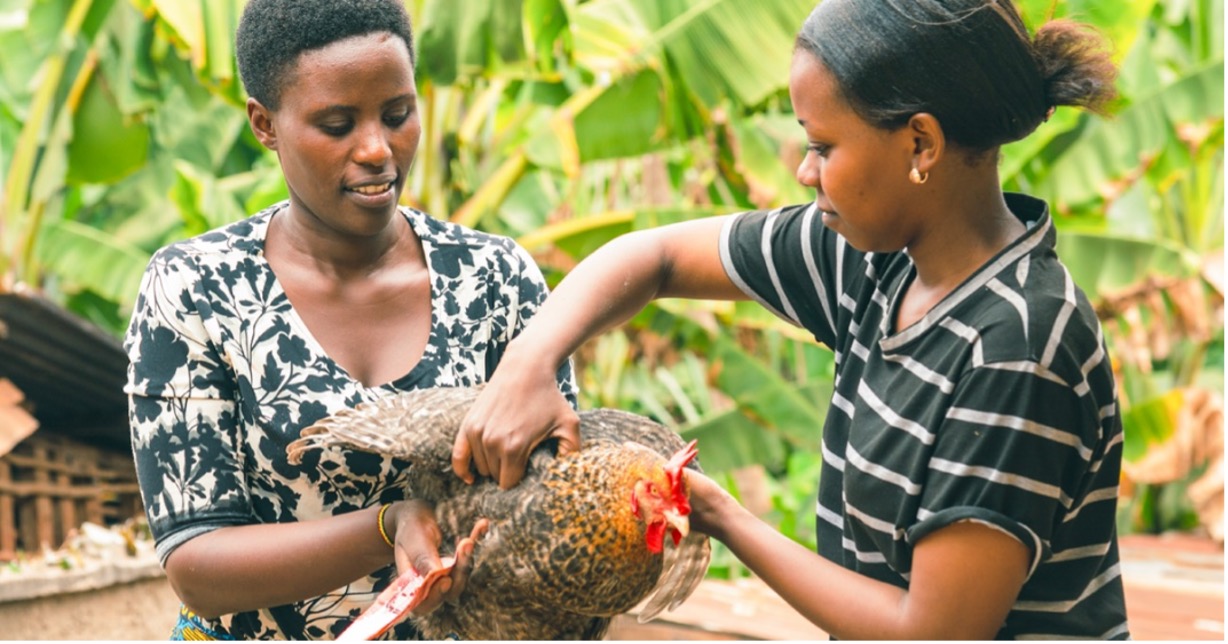Editor’s Note: Livestock is a major contributor to agricultural gross domestic product in Africa, with figures often around 40 per cent. Yet adoption of proven innovations in the sector remains stubbornly low. As climate risks, urbanisation and nutrition needs grow, closing this uptake gap is vital. This piece explores how a systems approach, focused on equity, co-design and better evidence, can unlock livestock’s full potential for sustainable development.
Across Africa, livestock are more than just animals—they are the foundation for livelihoods, food and nutrition security and sustainable farming. Over 1.7 billion people globally derive some livelihood from livestock, with more than half a billion directly depending on them for income, nutrition and resilience. In low- and middle-income countries (LMICs), livestock are central to integrated farming systems that also produce cereals, making smallholder farmers key players in feeding the continent.
Smallholder farms—those with less than 20 hectares—provide nearly 70 per cent of livestock and cereal production in LMICs. They also supply most of the meat, milk and eggs consumed locally. This underlines the critical importance of enabling innovation for smallholders to increase their productivity and produce safe and nutritious foods in a sustainable manner. However, despite a growing portfolio of livestock innovations across Africa, adoption remains inconsistent and often limited in scale. Understanding why—and what we can do about it—is essential for transforming livestock systems for a better future.
Demand is rising—but innovation isn’t keeping pace
Livestock-derived food demand in LMICs is growing rapidly, driven by rising populations, incomes and urbanisation. Yet, this rising demand isn’t a result of overconsumption – it reflects real nutritional gaps. Informal markets dominate livestock product sales, supplying 70 per cent of the meat, milk and eggs in LMICs. This informal dominance presents both a challenge and an opportunity: how do we foster innovation uptake in systems where formal infrastructure and institutional support may be weak?

The good news is that there’s no shortage of innovation. Africa is rich in locally adapted solutions—such from climate-resilient livestock breeds and vaccines targeting local diseases to customised digital extension systems and tailored approaches to support equality. Despite this diversity, many of these livestock innovations have not yet achieved widespread adoption. The reasons are complex—but solvable.
Why livestock innovations stall
The adoption gap is not simply about awareness or access. It often boils down to whether an innovation fits the realities and aspirations of farmers. Some livestock innovations aren’t tailored to the needs of women or youth, or they impose labour burdens without clear short-term returns. Others are hindered by poor market access, limited finance or unreliable input supply chains. Even when solutions are technically sound, they can be held back by weak enabling environments, limited public investment in livestock development or unintended negative consequences.
Many livestock innovations struggle to gain traction because they don’t reflect the needs of all users—especially women, youth and marginalised groups. Farmers often lack the financial, human or social capital to take risks, and innovations may arrive without adequate training or support. Uncertain returns, poor market access, lack of access to finance and limited availability further reduce adoption. When solutions are out of reach or mismatched with real-world conditions, disillusionment quickly follows.

What drives adoption?
The key to reversing this trend lies in better design, delivery and alignment. We need to shift from one-size-fits-all interventions to co-designed innovations that are shaped by users themselves. When farmers, especially women and youth, are engaged in designing solutions, adoption rates improve significantly because the innovations are better suited to local contexts.
Equally important are market systems approaches, which recognise that farmers operate in dynamic environments influenced by prices, intermediaries and institutions. Livestock innovations must be part of a broader system change—enabling market actors, and particularly the private sector, to reliably deliver products and services and ensuring that incentives for adoption are in place.
Capacity sharing is also critical. Innovations do not scale on their own—people scale them. Providing training, peer learning opportunities and digital tools can help build the skills and confidence needed to adopt new practices.
Finally, equity must be central. Gender-responsive and youth-inclusive strategies can enhance both reach and impact. Innovations that empower women and underrepresented groups don’t just promote fairness—they unlock untapped potential and drive broader systems transformation.
The role of evidence and narrative
One major gap is evidence. While we have data on adoption in some cases, we lack systematic insights into the longer-term impacts of innovation—on productivity, resilience, or food and nutritional security. We need better tracking of what works, for whom and under what conditions. This includes learning from success stories, which show that adoption is possible when all the pieces align.
There is also a need to reshape the global discourse on livestock. Too often, livestock are portrayed negatively, solely through a climate or consumption lens, without recognising their nutrition, livelihood, adaptation and other roles in LMICs. A more nuanced narrative is needed—one that reflects the real value livestock bring to smallholders and national economies.
A path forward: integrated, equitable livestock innovations
The future lies in bundled solutions that integrate complementary innovations, capacity strengthening and supportive systems. These can range from simple, proven practices to cutting-edge technologies. Success will depend on working closely with partners to identify and scale the right combinations, tailored to local contexts and capable of addressing the complex, interconnected challenges facing livestock systems.
The CGIAR’s 2025–2030 research portfolio is responding to this call, with science programs and accelerators—including the Sustainable Animal and Aquatic Foods program—designed to co-develop, contextualise and scale bundled solutions in partnership with national systems, communities and development actors.
In the end, the challenge isn’t just about creating new technologies—it’s about ensuring the right innovations reach the right people, in ways that work for them. By combining inclusive design, systems thinking and strong partnerships, Africa’s livestock sector can become a powerful engine for transforming food systems.
Header photo credits: ILRI/Paul Karaimu.






